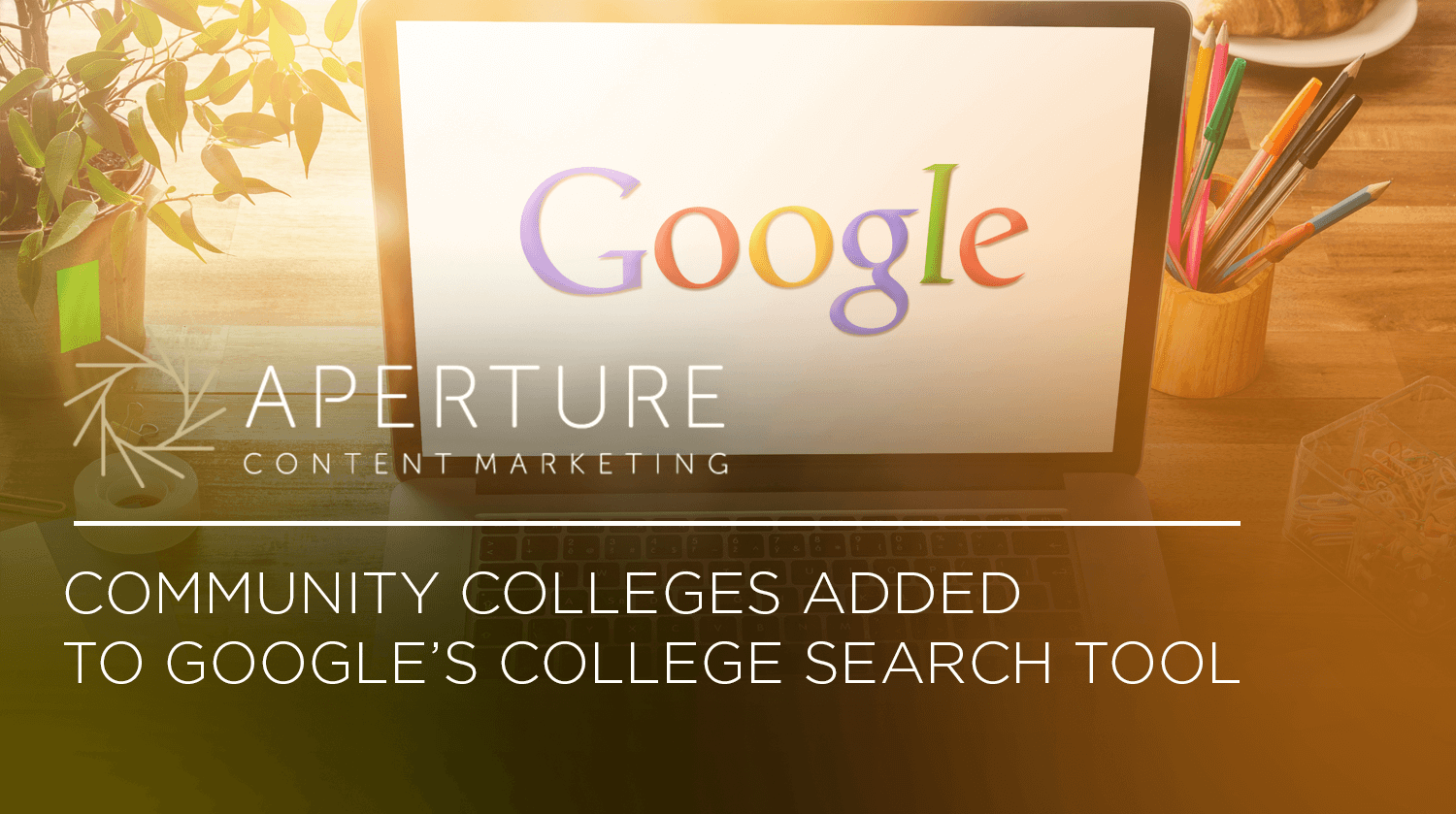Good news for community colleges at the start of application season.
Last year, Google rolled out a helpful new search feature for college applicants. It used information from the U.S. Department of Education’s College Scorecard and Integrated Postsecondary Education Data System (IPEDS) to help students quickly access data about tuition, graduation rates, and graduate’s salaries.
This new search experience made it easier to compare stats between different competing institutions. Key information about each college appeared at the top of each Google search. As 63% of prospective and newly enrolled students report feeling confused while researching colleges and financial aid options, this was an important step in the right direction.
A Massive Blind Spot in the Search Tool
However, the initial search tool didn’t include information about community and for-profit colleges. Despite this data being publicly available through IPEDS and College Scorecard, Google only included information about traditional four-year schools.
The omission ignited protest among community college advocates. In a recent blog Jason D. Delisle and Cody Christensen wrote: “Google’s search-display magic is reserved for students interested in just one part of our higher education sector — the one that mostly caters to traditional, full-time students seeking academic credentials who are often from upper-income households.”
Online Information Matters to Prospective Students
As Delisle and Christensen point out, upper-income students are more likely to be interested in four-year schools than two-year schools. They also have the most pre-existing support in navigating the college search process.
In contrast, community college students are disproportionately low-income and first-generation college students. While encouraging, their families may not know how to help their children navigate the college application process. That’s why it’s especially important that information about two-year schools is easily available online.
About sixty percent of recently-enrolled and prospective students used college websites and online search engines to research college choices in 2015. As digitally-savvy Gen Z comes of age, online visibility will continue to matter, especially to students who have fewer resources for navigating college choices.
Changes for the Better at Google
That’s why it’s great news that Google will be adding information about community colleges and other for-profit schools to its college search tool. Google will also make it possible to generate lists of potential colleges based on searchable factors, so that – for example – a prospective student could find every college offering a nursing degree within a hundred miles of their location.
Now students will be able to quickly compare two- and four-year degree programs and discover everything community colleges have to offer. Seeing a broad selection of schools will help prospective students find one that’s the right fit for them, not just one that ranks well.
Prospective students will also be able to more quickly identify predatory educational programs. High tuition fees and low graduation rates will appear by the college’s name online, raising red flags for prospective students.
Some Cause for Concern for Community Colleges
Of course, there’s some data that community colleges may not want displayed prominently. Community colleges continue to struggle with low graduation rates, which means that these numbers won’t compare well to four-year schools. Quickly seeing the difference might discourage some students.
In the interest of honesty and transparency, it’s good that prospective students will know that a large number community college students struggle to persist. Still, it’s important that community colleges control the narrative by addressing low graduation rates publicly.
Completing a degree, especially while working or raising a family, is hard. Community colleges should make sure that their web and print publications address these challenges, while still encouraging prospective students. Given all the information, many students will still be excited by the low tuition, diverse student bodies, and flexible degree options at community colleges.
What can your school do to improve your online presence?
Community colleges shouldn’t leave their online visibility in Google’s hands, even though it’s good to see some positive changes. That’s why it’s important to have a high-quality college website.
Your site should be easy to navigate and mobile friendly. Students should be able to find pages with information about key enrollment dates and financial aid. They should also be able to access information about certificate and degree programs.
Colleges also can’t neglect SEO on their websites. Marketing departments should make sure that when their target demographic searches for specific programs or financial aid options, your college website appears on the first page of search results.
Take Charge of the Narrative
Launching a content marketing campaign is one of the single best ways to improve search visibility and assist prospective students with their college research. Tell your own story by regularly posting high-quality information about degree programs, career and salary expectations, and completion rates.
While the new Google search feature is good news, schools can’t rely on a single college search to do all the work. There has to be something for students to find. Continuously providing up-to-date content will make your community college website an invaluable resource as students research their college options.
Need advice about your digital marketing?
Want to improve your online offerings but need some expert guidance? Read our post about creating a college website, or our post about content marketing for community colleges.
If you want more help crafting a powerful digital marketing strategy, contact our team today. We’ve created hundreds of successful multichannel marketing campaigns at community colleges around the country, and we can help you meet your enrollment goals.


